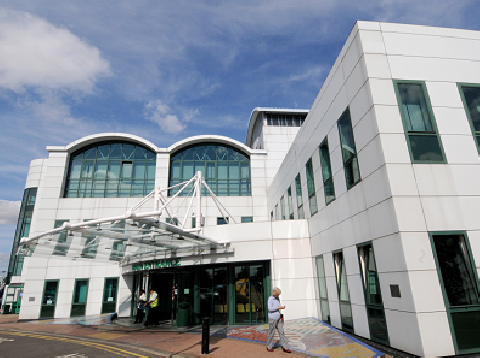Access Control Solutions for Hospitals
26 September 2018

Monitoring, controlling and restricting the movement of people within a hospital environment requires an advanced access control system. For a typical medical facility, the number of people involved who work or visit the site can number several thousand at any one time. Some are permanent staff on-site, whilst others only require temporary access. From a security perspective, there will also be public and private access areas, with some private areas requiring the highest degree of protection and secure access.
Access control systems are critical building systems. They contribute towards the overall smooth running of any hospital environment whether public, as in the case of the NHS or run privately like Spire. An access control systems primary function is to grant or deny access to credential holders. The system should also protect building assets and may be integrated with other security solutions. These could include vehicle access barriers, automatic number plate recognition (ANPR), CCTV systems, perimeter intrusion detection systems for fenced off areas, fire and intruder alarm panels, time and attendance and visitor management software.
No other type of building should be more concerned with the ‘wellness’ of its occupants. As we move into the era of the ‘smart building’ more demands are being placed on access control panels and other devices to integrate and generate information that can be collated through middleware platforms for analysis. Data gathered from access control and HVAC systems via a native BACnet interface can lead to energy savings and a more comfortable environment for those present.
Hospitals and other types of medical environment (e.g. care homes, residential homes and even GP surgeries) must constantly cope with a mixture of fixed and transient populations, with varying flow volumes and at different times of the day and night. In addition there are also many high value assets within such a building including IT systems, drugs, personal records, patient notes and documentation and even the personal possessions of staff and patients.
When designing an access control system for a medical facility it is important to consider:
- Access to the site: this is the first level of protection for any facility. How do you control and monitor vehicles and people entering a site (car park) or even the hospital buildings themselves? There are a number of options to consider including car park barriers, fenced off areas, ANPR and access tokens and payment stations. For the building, attention should be given to door entrance security in terms of turnstiles, door control in the form of magnetic or strike or wireless locks, revolving, sliding or hinged movement, lift access and the levels of internal security required.
- Access within the buildings: this is the second level of protection and one that relies on a well-designed, installed and maintained access door controller and software management system. When designing an access control system, thought has to be given to the number of doors, their location, frequency of use and security requirements. This information can then be distilled into the number of access door controllers required and how the system itself will control the doors. Wireless locks are popular within the hotel and tourism industry but may not be considered secure or reliable enough (during a power or IT network failure) compared to hardwired locks, card readers and their access door controllers. Credential management is also an important consideration. This is done via the access control software and should be a secure and yet easy to use service. The system may have to manage several thousand credentials and door permissions and it must be able to do so quickly, efficiently and accurately. A credential contains the access rights given to an individual. There are several ways to present and read the credential including the use of radio frequency identification (RFID) cards and readers, proximity cards, smart cards, pin pads and biometric readers. Additional consideration should be given to request to exit (RTE) buttons and emergency planning and building evacuation in terms of door locking or opening and roll-call data at set mustering points.
- Systems Integration: hospital and medical facilities are 24/7 operations. The access control management software should be able to pull in CCTV streams and where possible link access events to specific cameras and their video streams using tagging. Hospitals tend to have power protection plans but additional thought needs to be given to the access control system and its backup power. Individual access door controllers can be fitted with battery backup and card readers may use PoE and RJ45 connection cables for their power.
Installing the right access control technology will provide a hospital with many benefits including physical security and data collection that could be used to improve the overall building environment, its energy usage and performance. Remsdaq has installed its access control systems in several UK hospitals, with installations in Europe and the Middle East. Please let us know if you would like a free site survey or design consultation.
